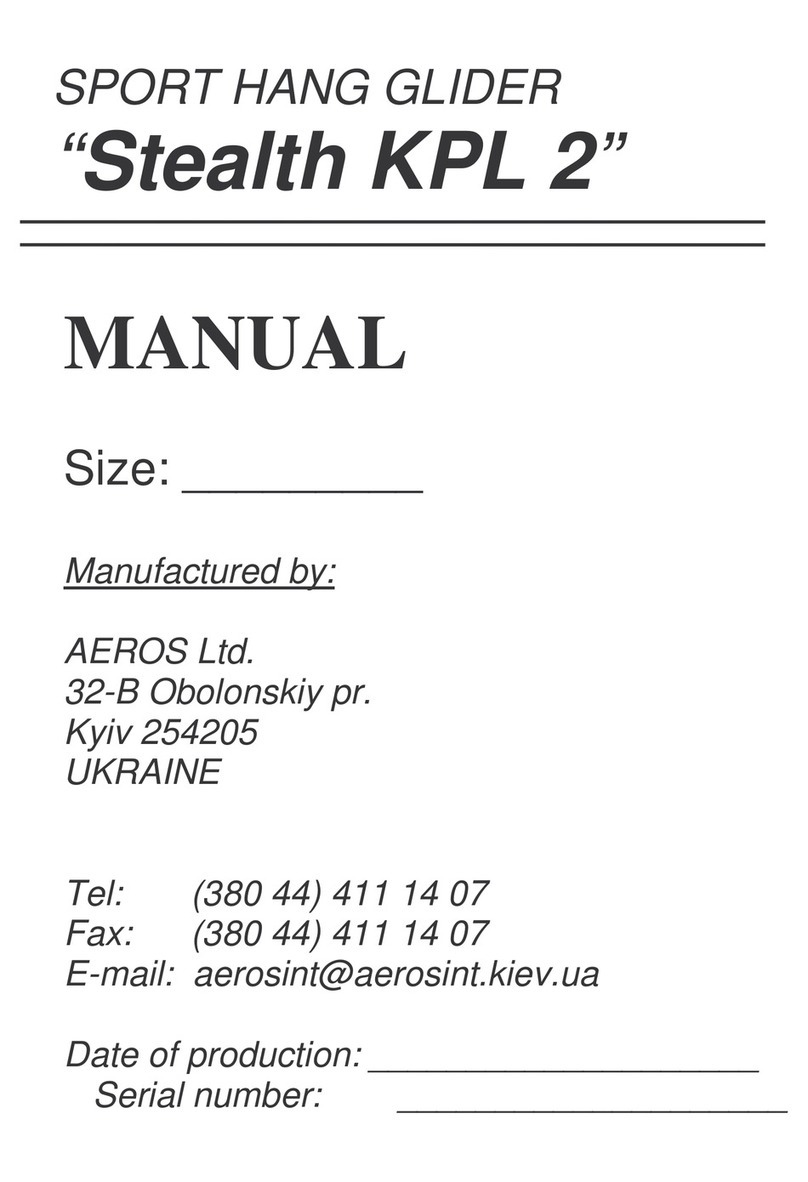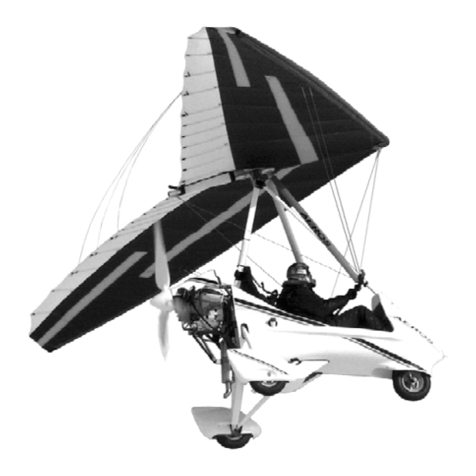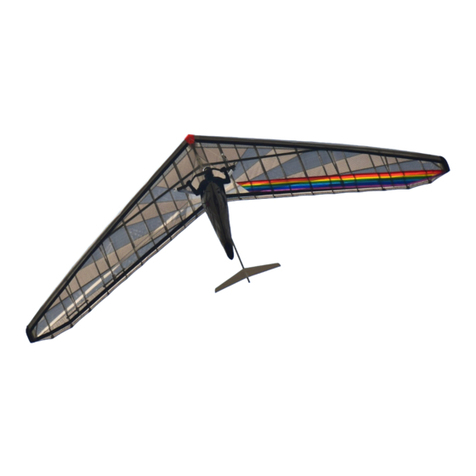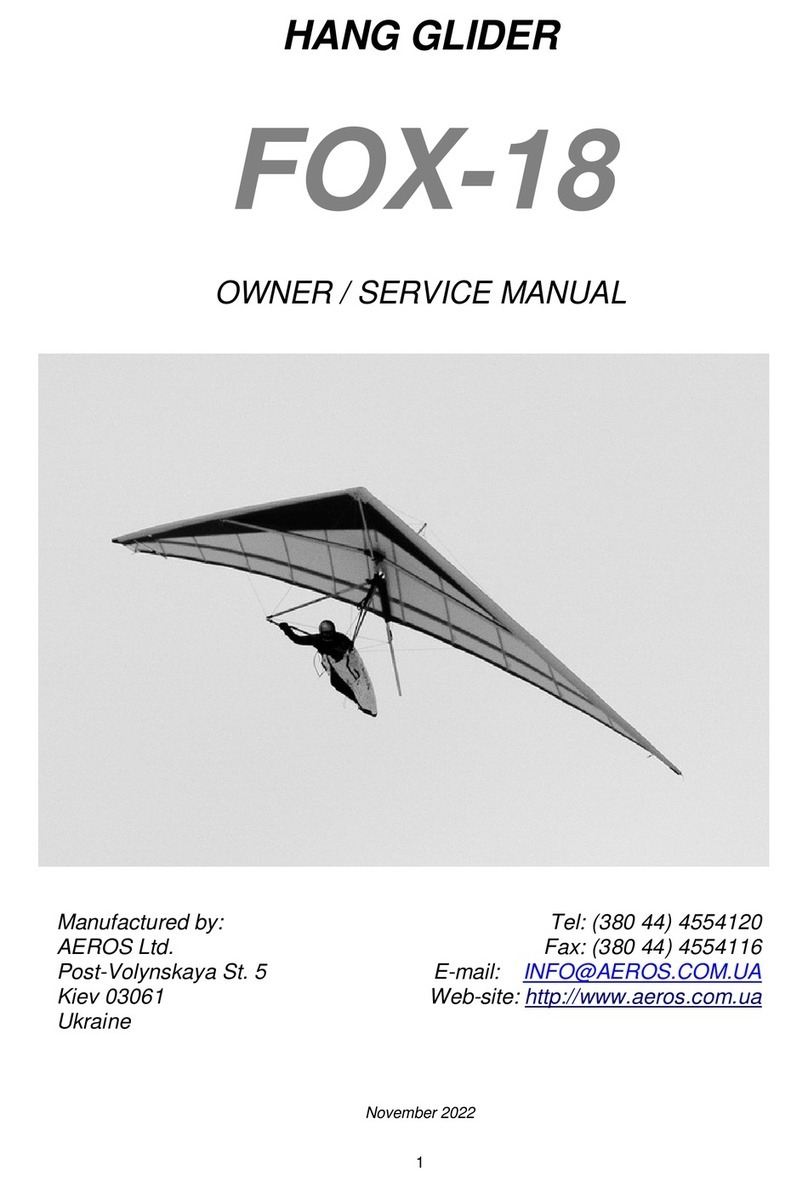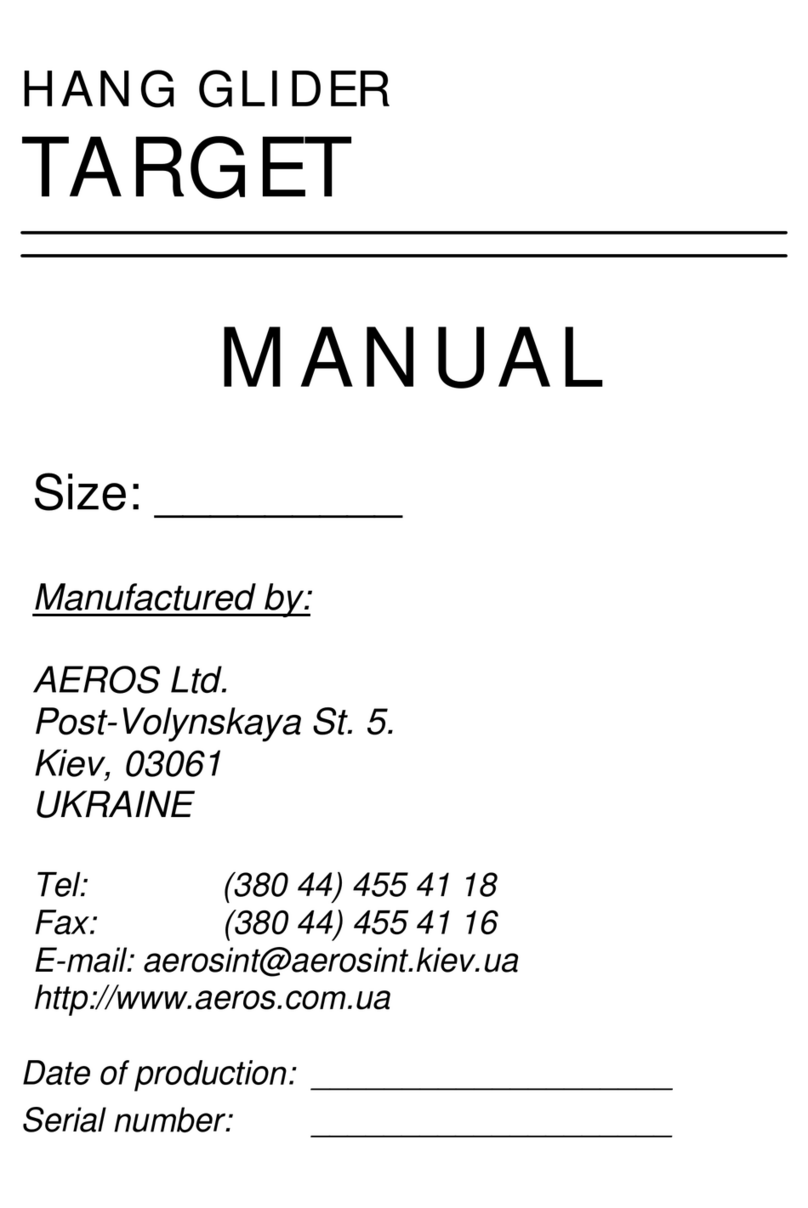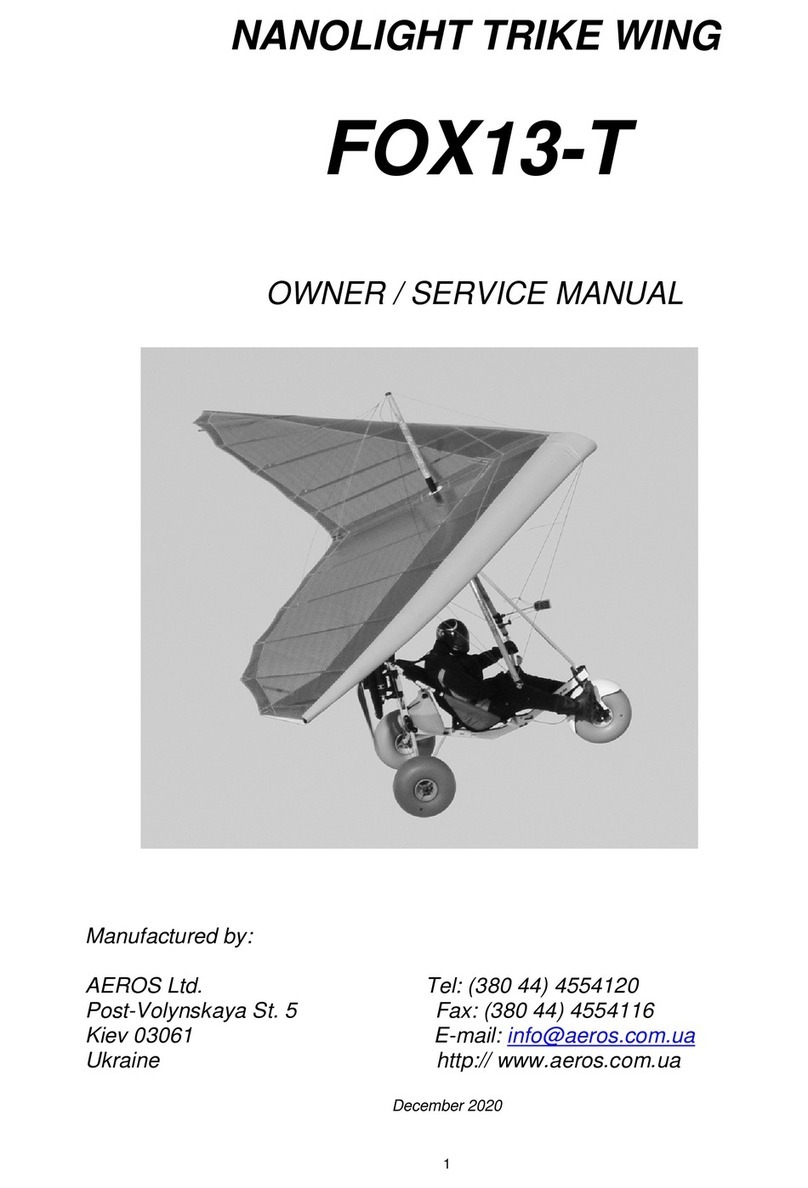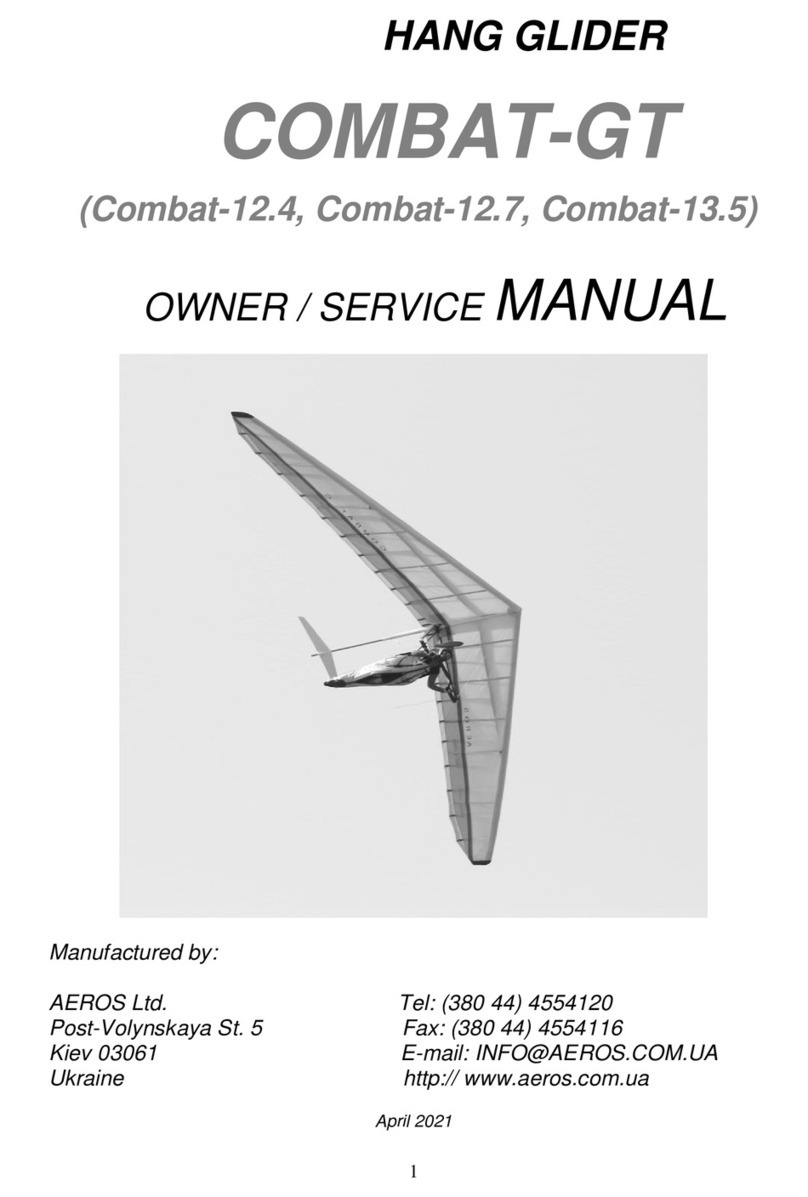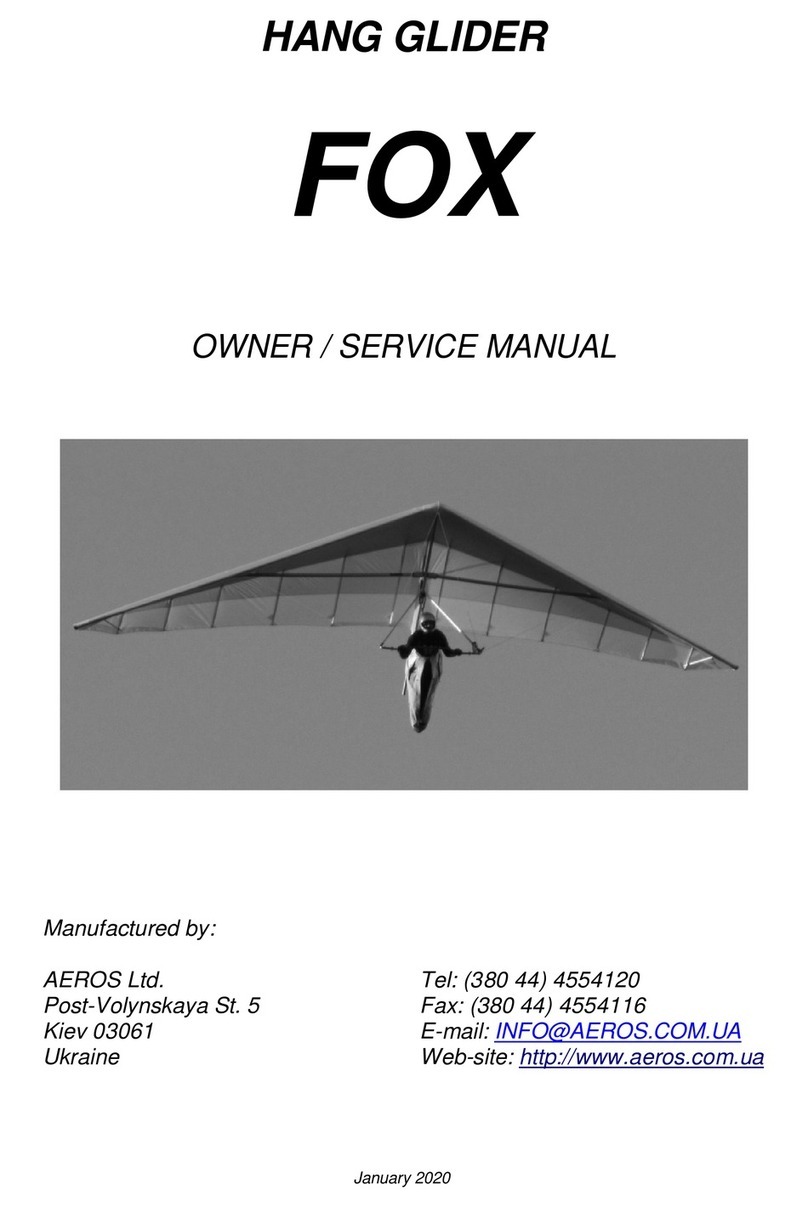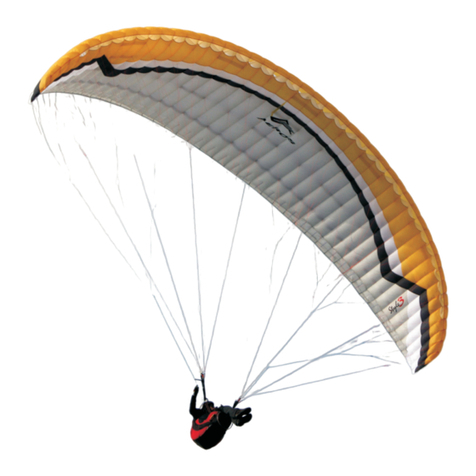2. TECHNICAL INFORMATION AND OPERATING LIMITATIONS
Flight operation of the Still TL should be limited to non-aerobatic maneuvers; those in which the
pitch angle will not exceed 30 degrees nose up or nose down from the horizon and bank angle
will not exceed 60 degrees.
Wing area, sq.m. (sq.ft.) 17.4 (187)
Wing span, m (ft.) 10.00 (32)
Aspect ratio 5.8
Nose angle, °
°°
°122
Weight (without bags), kg (lb) 57.5 (127)
Number of sail battens 15
Double sail, % 30
Range of operating overloads +4/-2
Ultimate tested strength, G +6/-3
Wind speed max, m/sec (mph) 10 (22)
Min. airspeed, km/h (mph) 50 (31)
Cruise speed, km/h (mph) 75-85 (47-53)
Max. airspeed, km/h (mph) 105 (65)
Max. take-off weight, kg (lb) 472.5 (1041.7)
Aeros recommends that no attempt should ever be made to deliberately spin a trike with this
wing or any wing.
The stability, controllability, and structural strength of a properly maintained Still TL have been
determined to be adequate for safe operation when the wing is operated within the entire
manufacturer specified limitations.
No warranty of adequate stability, controllability, or structural strength is made or implied for
operation outside of these limitations.
Operating the Still TL outside of the above limitations may result in injury and death.
Flying a trike with the Still TL wing in strong or gusty winds or turbulence may result in loss of
control of the wing, which may lead to injury and death.
Do not fly in such conditions unless you realize and wish to personally accept the associated
risks.
3. STILL TL REASSEMBLY AFTER SHIPPING PROCEDURE
1. With the wing in the bag (4 meters long) lay the glider on the ground.
2. Undo the wing bag zipper. Untie the Velcro straps. Remove the battens, the base tube and
the leading edge tubes N3 from the bag.
3. Turn the wing so that the downtubes, packed into the safety bags, are on the bottom.

